Technical Applications For Underwater Windows (Mostly Using Acrylic) [2025]

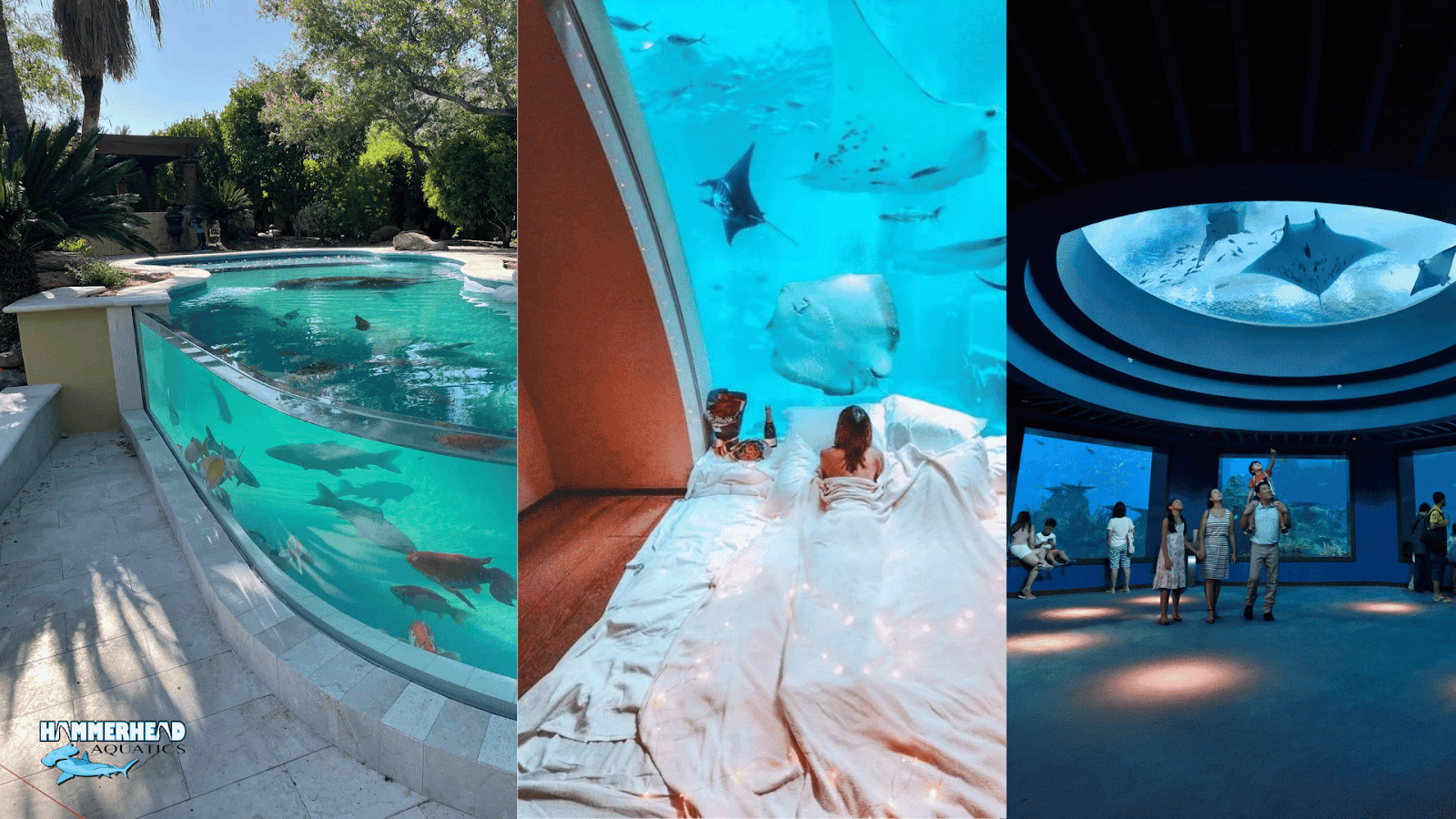
When people think of underwater windows, they usually imagine hotel pools with a glass wall or maybe an aquarium. But they actually have dozens of serious, technical applications that you probably haven’t heard of.
In my 30+ years of working with underwater and pool windows, I’ve learned about places where underwater windows can be installed that you’d never expect: research tanks, water treatment plants, hyperbaric chambers, even flood barriers for buildings sitting next to rivers. Each of these knowledge helped me learn how water, pressure, and materials behave even more.
In this article, I’ve decided to put down my knowledge into work. If you’re an architect, builder, or just someone curious about how these windows are actually used, you’ll find a lot to take away.
Let’s begin.
TL;DR
- Other than pools, underwater windows can be used in engineering, flood defense, ships, research, and medical chambers.
- Material choice matters: acrylic usually wins for clarity and strength, while glass has its place in flood or surface applications.
- Every application must be designed for pressure, chemicals, and long-term durability. There’s no one-size-fits-all solution.
- The biggest failures I’ve seen almost always come from poor sealing or wrong material choice.
- Companies like Hydrosight set the gold standard when it comes to specialized industry-grade underwater windows.
- For underwater windows in private aquariums or pools, you may consider contractual companies, like Hammerhead Pools, who specialize in these aspects.
Now let’s get into the details.
Some Facts And Knowledge About Underwater Windows
Before We Learn About Applications, Let’s Learn Some Facts About Underwater Windows
What Are Underwater Windows & Why They Are Technical
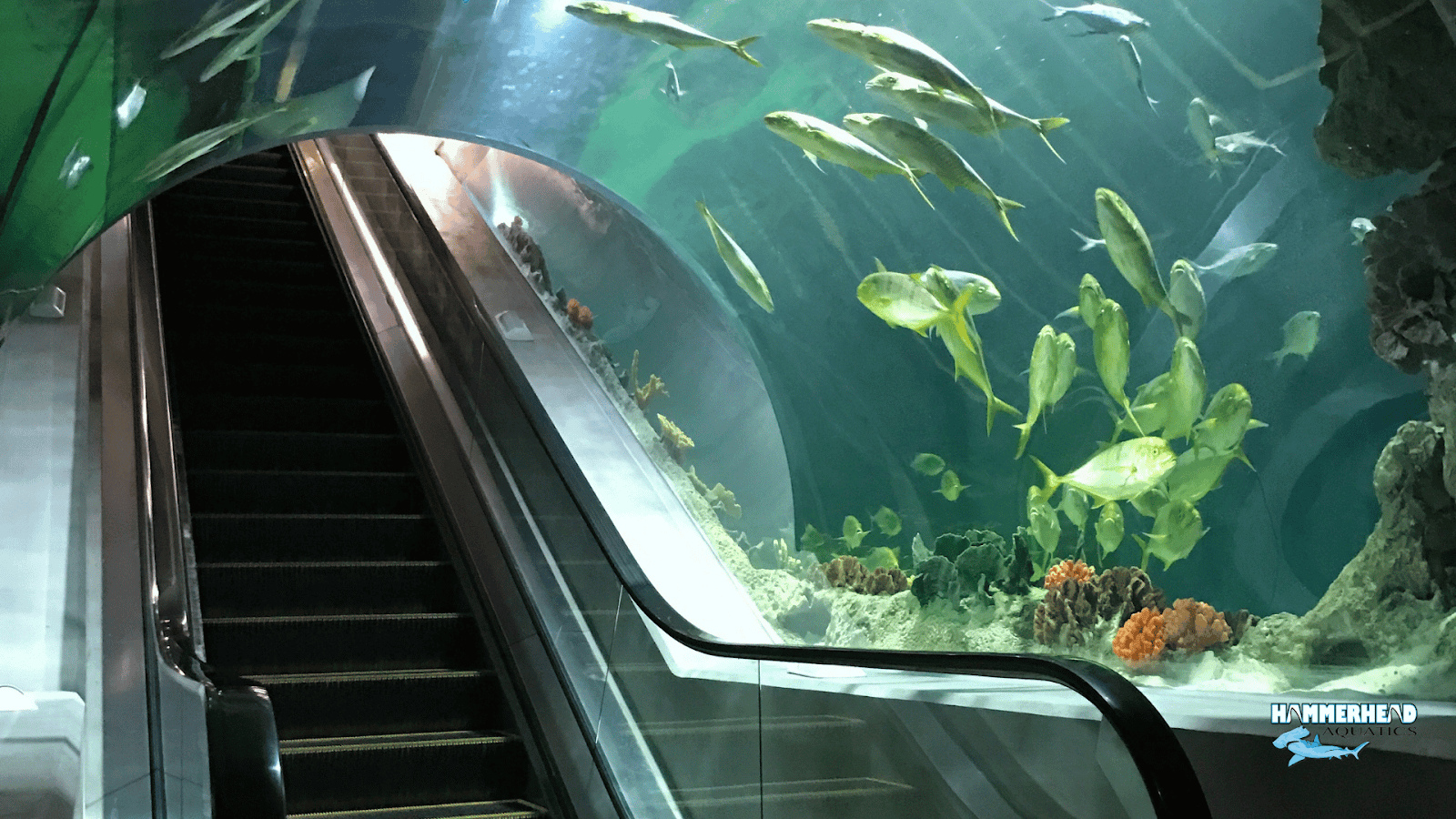
Underwater windows (also called underwater portholes, pool glazings, viewing panels) are structural transparent elements installed in submerged or partially submerged walls. Their purpose may be observation, aesthetics, monitoring, flood defense, or safety.
They have to withstand hydrostatic pressure, sometimes dynamic pressure from waves or moving water, load from human usage or watercraft, thermal differentials, chemical exposure (chlorine, salt, etc.), UV radiation, and sometimes biological fouling.
Depending on the region and application, certifications may include DNV (for marine vessels), ANSI Z97.1, CPSC for safety glazing, ASTM standards for load/impact, storm rating, lamination, etc.
Material Choices — Acrylic, Glass, Polycarbonate
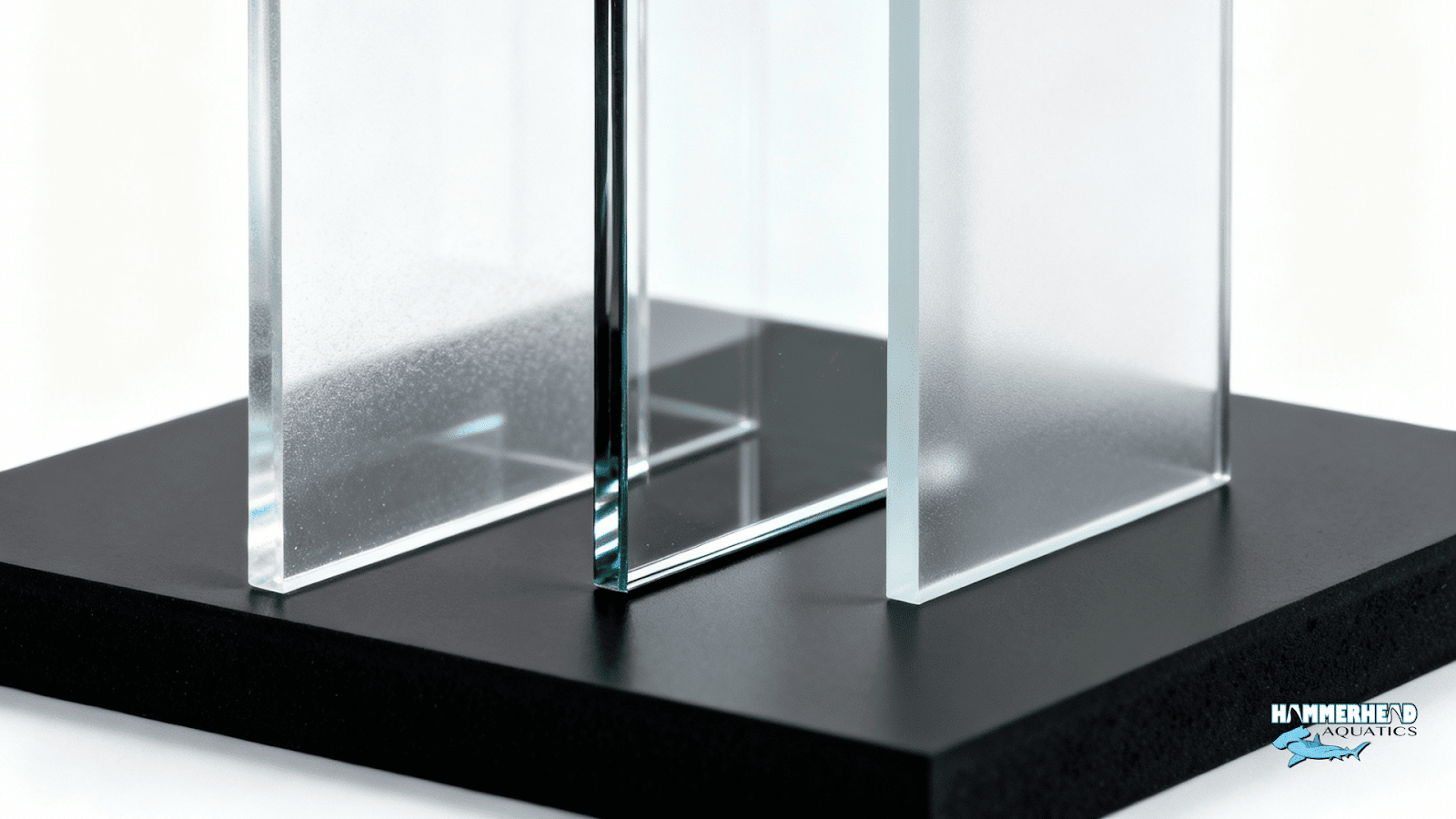
Following are materials that can be used when creating underwater windows.
I. Cast Acrylic (PMMA)
- Advantages
High optical clarity (≈ 90-92% visible light through thick sections); good impact strength; lower density (≈ 1.17-1.20 g/cm 3, roughly half glass), good insulation (lower thermal conductivity), better flex under load before failure, less chance of shattering. - Disadvantages
Scratches more easily; UV may yellow inferior acrylic; more expensive by volume for thick panels; requires careful support to avoid bending, creep over time; joint/seal areas can be weak if not designed properly. - Typical Use Cases
Large pool windows, aquarium panels, hyperbaric chamber windows, high visibility zones, architectural and residential design features.
II. Laminated / Tempered Glass (including low-iron, safety glass, interlayers like PVB / SGP)
- Advantages
Hard surface (scratch resistance), acceptable clarity if designed well, good rigidity (less flex), lower cost per mm in some contexts if not too thick, long history of standards.
- Disadvantages
Heavy; thicker panels needed for deep water (losing clarity, adding weight & structural demand); risk of catastrophic shattering if failure; more complex support and sealing; often less forgiving at edges or under point loads.
- Typical Use Cases
Flood barrier walls, windows where surface hardness is needed, decorative applications, shallower installations, where weight is less of issue or support structure is robust.
III. Polycarbonate
- Advantages
Very high impact resistance, good toughness, some UV resistance possible with coatings. - Disadvantages
Generally lower optical clarity compared to premium acrylic; more prone to hazing, chemical attack; more expensive in many jurisdictions; more tricky to polish or restore. - Typical Use Cases
Typically in safety-critical applications, temporary installations, or where risk of impact (debris, vandalism) is high. Sometimes combined with other glazing.
Where Are Underwater Windows Used (and Why)?
So, I’ll get straight to the point. Here, I will discuss real-world uses and explain what happens in each case, the technical challenges, and what I’ve learned by either working on or studying these installations.
1. Plant Engineering
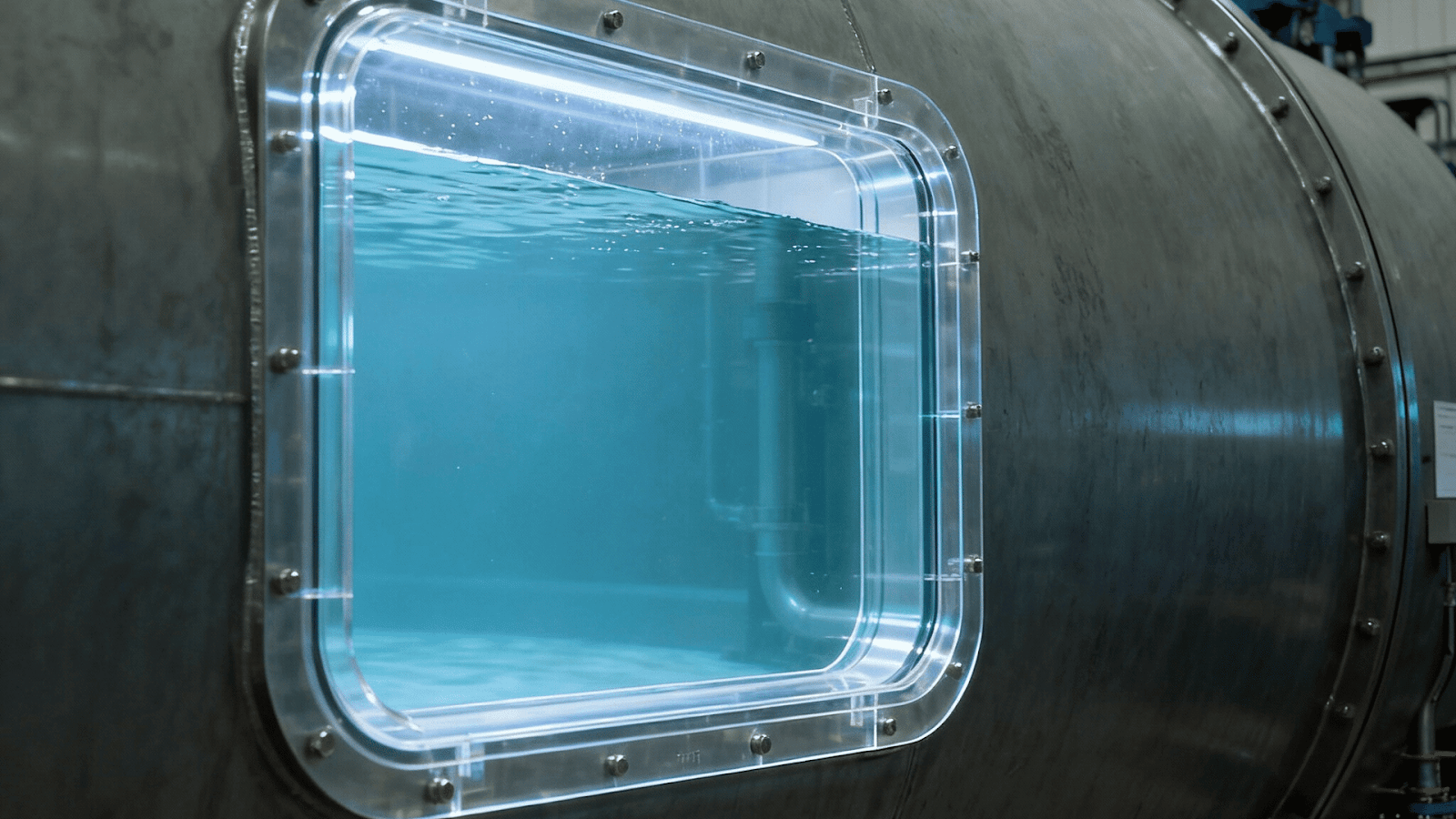
In water treatment plants, underwater windows are used for operators to see what’s happening inside, whether that’s checking water clarity, spotting sediment buildup, or simply showing visitors how the system works.
The challenge here is chemical exposure. Chlorine and other treatments eat away at poor-quality seals. I’ve seen projects fail because a standard rubber gasket was used instead of a chemical-resistant seal.
In this context, the underwater window is more like a tool than a feature.
2. Flood Barriers
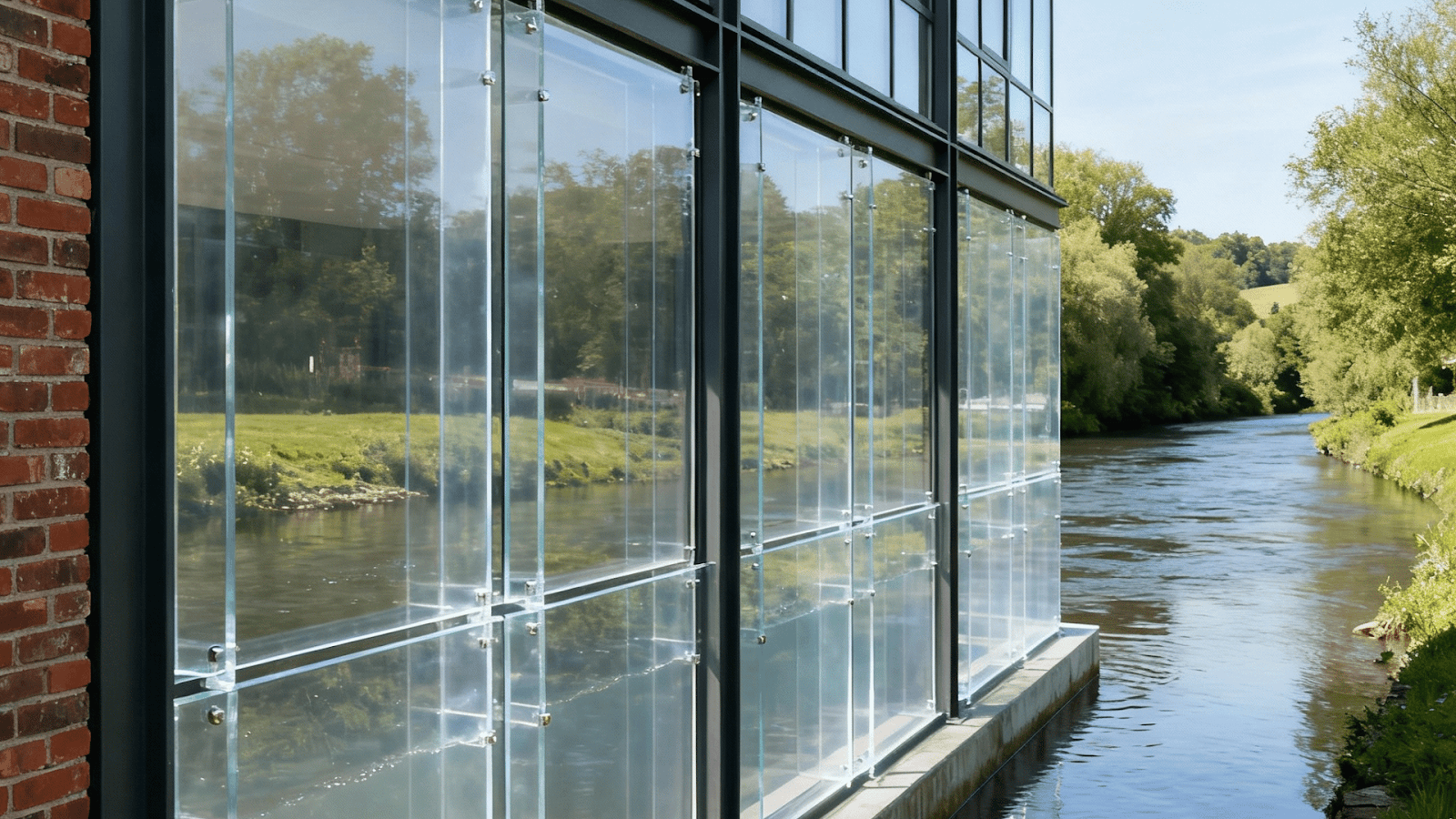
This one surprises most people. Buildings next to rivers or oceans sometimes include glass walls designed to hold back floods. That means the windows have to act like a dam wall.
Here’s the thing: water pressure rises quickly. Just a couple of meters deep, and the load is enormous. That’s why these windows are engineered more like aquarium panels with thick acrylic or laminated glass, heavy frames, and storm-rated seals.
I always hear experts tell clients: don’t even think about using a regular commercial glass wall. When the pressure comes, it’s not forgiving.
3. Ships and Marine Vessels

Some ships include underwater windows so that you can observe the sea floor while staying dry. These can be mounted right at the waterline or fully submerged.
Have you seen the Titanic? For large ships like that, these windows are a common design aspect.
Here, acrylic is the best material of choice. Why? It’s lighter, it bends instead of shattering, and it’s easier to form into custom shapes.
But certifications do matter. On a ship, a faulty window could lead to a large disaster. That’s why builders work with authorities like DNV for approval.
4. Ice Storage Tanks
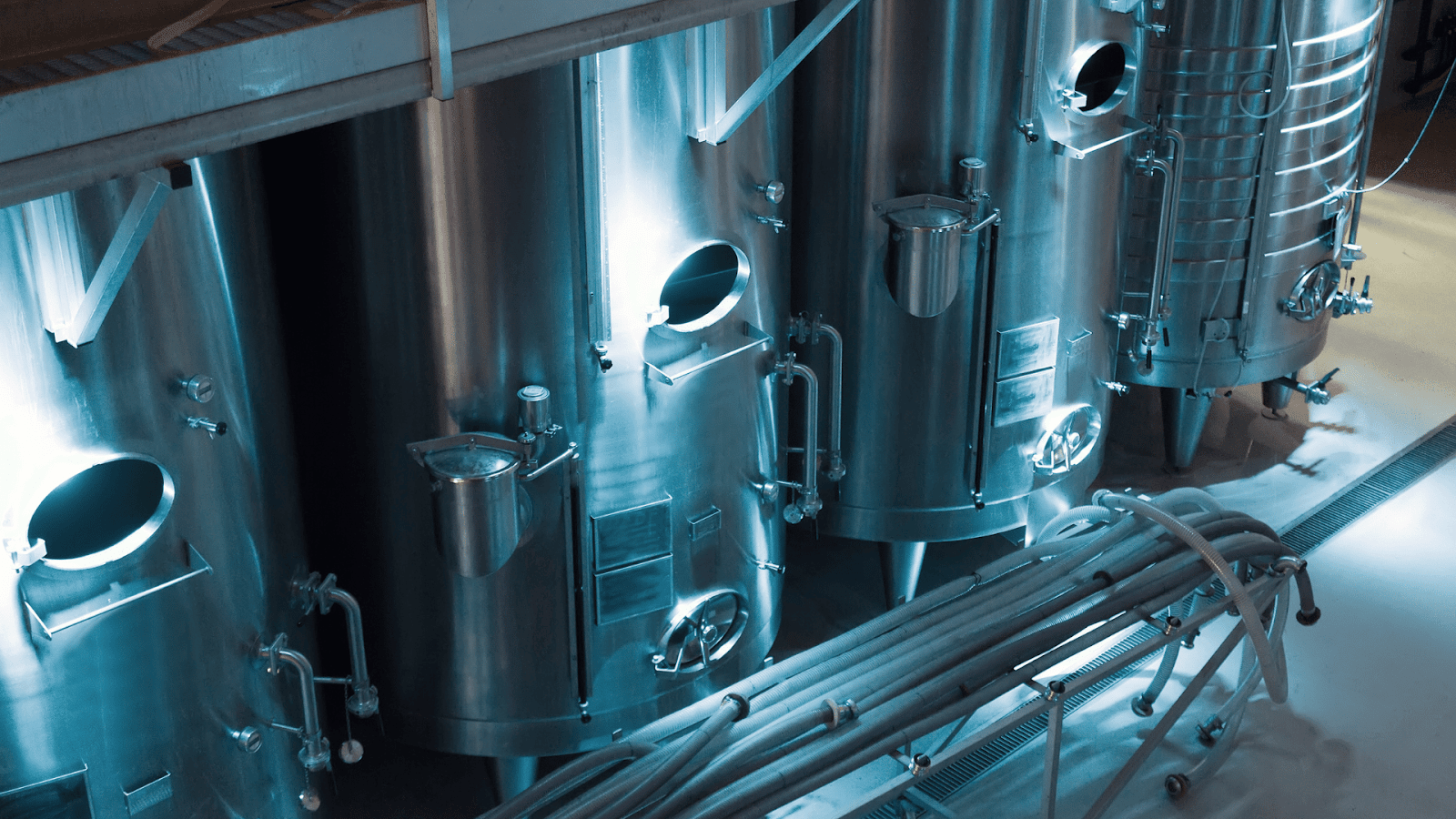
One of the oddest projects I came across was an ice storage tank used for air-conditioning in large buildings. These tanks freeze water into huge piles of ice at night, then circulate it during the day to save energy.
Underwater windows in this case are there so operators can literally check the size of the ice pile. It’s a perfect example of how windows can be purely functional.
5. Research & Universities

I’ve observed scientists working on research tanks to track water flow, film experiments, or observe underwater mechanics. The Delft University of Technology and TU Brunswick have both used underwater windows in their test tanks.
In research setups, clarity is everything. Even a slight green tint in the glass can ruin high-speed video analysis. That’s why acrylic panels, despite being harder to protect from scratches, are often the go-to material.
6. Fish Counters & Ecological Studies
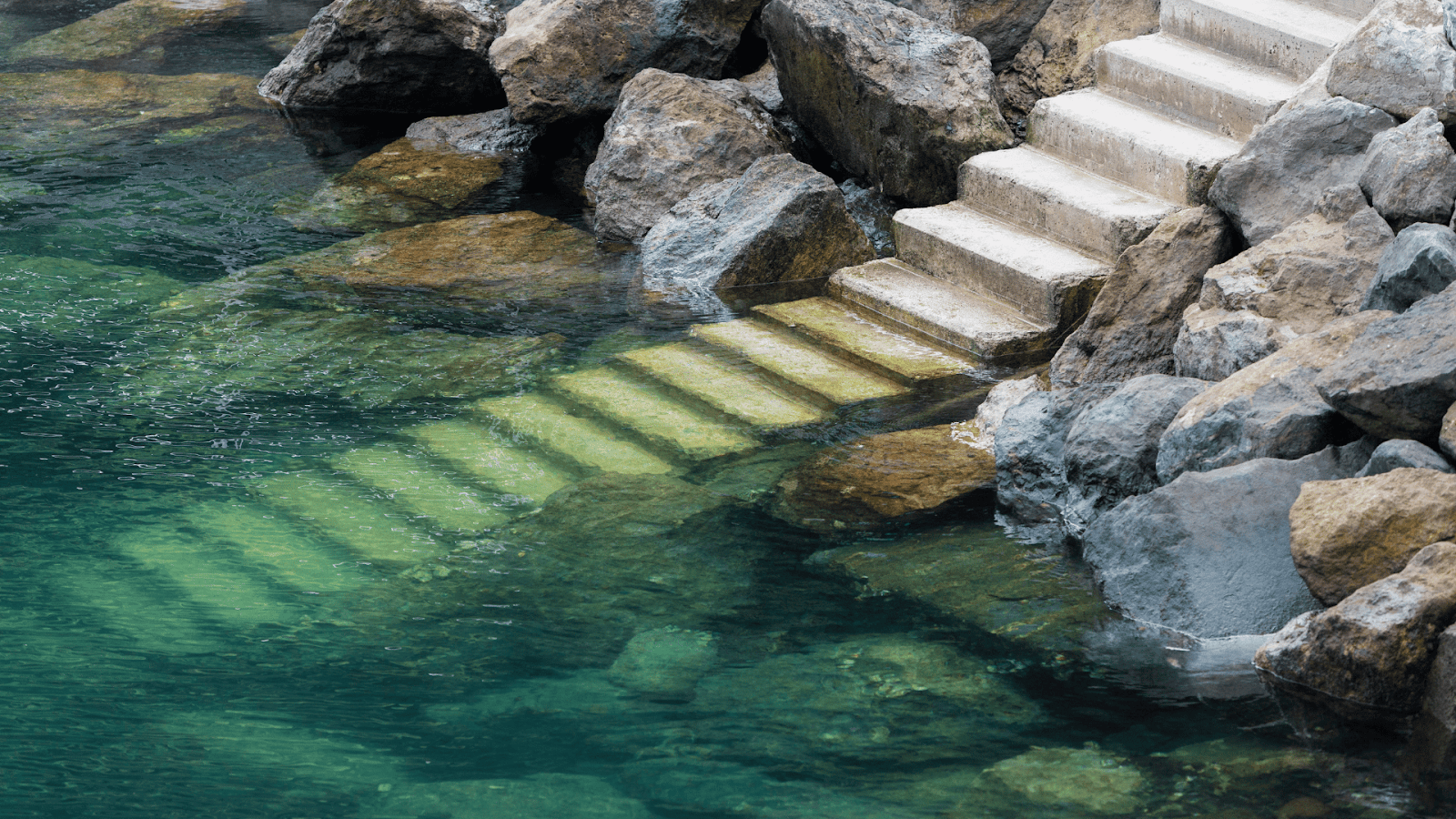
Rivers with fish ladders often include underwater windows so researchers (or sometimes the public) can count species as they migrate.
These installations deal with rough water, debris, and sometimes even ice. That means the frames and seals have to be extra tough. I’ve seen cases where a window survived years of flowing water but failed when a floating log slammed against it. That’s a reminder: impact resistance matters as much as pressure resistance.
7. Hyperbaric Chambers

Finally, medical applications. Hyperbaric chambers use thick acrylic windows to let doctors monitor patients during oxygen therapy.
The technical challenge here isn’t outside water pressure, but internal pressure. These chambers simulate deep-sea conditions. A weak seal or subpar panel is a direct risk to human life. That’s why these windows are tested far beyond normal working conditions.
What I’ve Learned (The Hard Way)
- Seals are the weak point.
Almost every major failure I’ve investigated came down to the wrong gasket, bad bonding, or poor installation. - Acrylic needs care.
It’s amazing for clarity, but scratches easily. If you don’t train cleaning staff properly, you’ll regret it. - Glass feels safer, but weight is a killer.
At certain thicknesses, the weight of laminated glass makes framing and installation a nightmare. - Every project is custom.
You can’t copy-paste designs from a pool into a research tank. The environment dictates everything. -
Final Thoughts

As you just learned, underwater windows are not limited to luxury pools or aquariums. They’re shaping industries from research labs to defense training centers. Their technical applications prove that when engineering meets vision, architecture can deliver both functionality and inspiration.
Whether it’s improving swimmer safety, giving researchers a controlled observation tool, or creating unforgettable viewing experiences, underwater windows are a powerful blend of design and utility. And as building technology advances, their role in technical and architectural projects will only grow stronger.
Expert Underwater Window Installation
If you’re planning a private project with underwater windows on a pool or aquarium, then you may consider consulting my team, Hammerhead Pools. We haven’t been working with underwater windows and pool windows for over 3 decades now. So we can promise the best quality and expertise. Reach out to us for a free quote.
But if you have some questions or opinions about what I just shared, leave a comment and I will answer with my best knowledge.
FAQs
1. Why not just use regular glass?
Because water pressure isn’t like air pressure—it adds up fast. Regular glass will crack or shatter. You need engineered acrylic or laminated safety glass designed for hydrostatic loads.
2. How do you stop underwater windows from leaking?
It comes down to frame design and seal quality. Stainless steel frames, chemical-resistant gaskets, and tested flange designs are non-negotiable.
3. Which lasts longer, acrylic or glass?
Glass is harder to scratch, but heavier and harder to install in thick sections. Acrylic can last decades if you maintain it and polish out scratches.
4. Do underwater windows fog up?
They can. Thermal differences between water and air cause condensation. Acrylic performs better than glass here because it insulates better.
5. Can I DIY install one in my pool?
Not if you want to sleep at night. These windows are structural. A wrong move can mean leaks, cracks, or worse. Always go with experienced installers.
For any project involving underwater windows whether in pools, research facilities, flood defense, or medical chambers, working with experienced installers is critical. Acrylic underwater windows require precision engineering for load bearing, sealing, and durability to prevent leaks or catastrophic failure. Professional teams like Hammerhead Pools specialize in custom designs and secure installation to ensure safety and clarity over decades. Reach out early to secure expert advice, a free quote, and best practices to make underwater windows a reliable, elegant, and functional feature of any aquatic or engineered environment.











